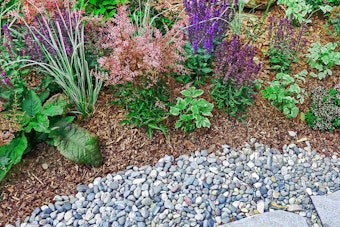 Be Inspired Blog - Arizona
Be Inspired Blog - Arizona

Protect Those Precious Plants During Heat Waves
Finally the sun is out, the rains have slowed, and we can enjoy the time and energy we put into our garden in spring to prepare for a lovely summer. But when temps surge, baby, it's warm outside. Don't let all your hard work in spring wither away. Here are a few easy things you can do to protect those precious plants from the heat...
Water Early and Water Well
When temperatures soar, we tend to go into panic mode and water water water! Water is the answer but how, when and how much is definitely key during crazy hot summer days. While there are exceptions to everything in the garden, here are some basic tips to keep your plants thriving and you out of panic mode.
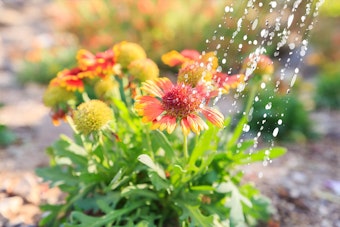 Water in the morning – this will prevent heat scald and evaporation. It will also discourage slugs and many fungal diseases. Rely on drip irrigation or soaker hoses rather than sprinklers.
Water in the morning – this will prevent heat scald and evaporation. It will also discourage slugs and many fungal diseases. Rely on drip irrigation or soaker hoses rather than sprinklers.
- Focus on a really deep soak every other day instead of watering multiple times a day using less water. Deep, less frequent watering encourages deep root growth and helps plants become more resilient to heat and drought.
DAILY WATERING IN EXTREME HEAT: In extreme heat, water small flowers and vegetables, and any newly planted plants daily, while their root systems are still being established. Also water potted plants daily, as extreme temperatures will increase water evaporation and dry out the soil quickly.
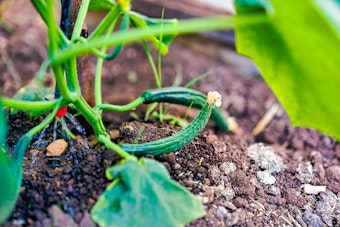 When you do water, be sure to water directly near the root area where the plants really need it. Consider installing a drip irrigation system, which delivers water directly to the plant's root zone. This ensures efficient water use and minimizes evaporation.
When you do water, be sure to water directly near the root area where the plants really need it. Consider installing a drip irrigation system, which delivers water directly to the plant's root zone. This ensures efficient water use and minimizes evaporation.
Other Key Ways to Protect Your Plants
1. Group Plants by Watering Needs
Organize your plants based on their water requirements. This will allow you to provide appropriate watering without over- or under-watering any particular plant.
2. Mulch it Up
Apply a layer of organic mulch, such as wood chips or straw, around the base of plants. Mulch helps regulate soil temperature, reduce evaporation, and suppress weed growth. It also acts as a natural substitute to fertilizers.
3. Hold the Fertilizer
When temperatures are high, plants are unable to absorb nutrients, leaving the fertilizer on the surface layer. Fertilizing can also cause a plant to go into a temporary dormant state which will ultimately slow its growth. It’s best to wait until the weather gets back to a normal, manageable temperature before feeding again.
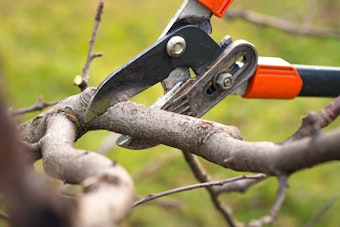 4. Minimize Pruning or Hold Off Completely
4. Minimize Pruning or Hold Off Completely
While pruning typically helps to stimulating growth, it's best to prune less or not at all during a heat wave. Limit it only to dead, rotted or decayed parts of the plant as they are the perfect candidates of the pruning process.
5. Let Sleeping Soils Lie
Don’t mess with your soil during a heat wave as it will worsen the situation by releasing the trapped water. Refrain from planting, digging and even weeding during really warm temperatures. Yes, in this case, it’s actually better to leave a weed be than to disturb the soil. You can simply cut or chop the weed to tidy up your garden as long as you let your soil be.
Use Organic Matter in Soil
Incorporate organic matter, such as compost or well-rotted manure, into the soil. This helps improve soil structure, retain moisture, and provide nutrients to the plants.
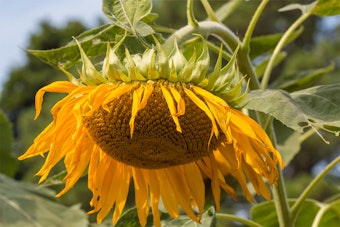 6. Monitor Plants Closely
6. Monitor Plants Closely
Regularly inspect your plants for signs of heat stress, such as wilting, yellowing leaves, or drooping. Take immediate action by providing shade or adjusting watering if necessary.
7. Create or Embrace Windbreaks
Wind be an huge instigator in drying out soil and plants. Create a windbreak with a fence or hedge. Be sure that it still allows for some air flow as to not create a heat trap.
8. Provide Adequate Air Circulation
Ensure that plants have good airflow around them. Proper ventilation helps prevent fungal diseases and reduces heat stress.
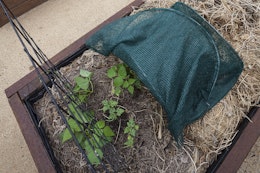
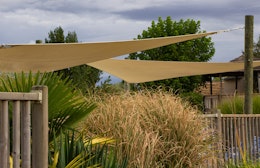 9. Provide Shade
9. Provide Shade
There are many ways you can create shade in your garden landscape. Create shade for sensitive plants by using shade cloth, umbrellas, or plant shade trees strategically. This helps protect plants from excessive heat and sunburn.
10. Time Outdoor Activities
Schedule gardening tasks during cooler parts of the day, such as early morning or late evening, to minimize heat exposure for both yourself and the plants.
11. Heat Waves
Remember to adjust these tips based on the specific needs of your plants and the severity of the heat wave.
If you have questions about these products or additional measures you can take to protect your garden during warmer months, stop by your local SummerWinds Nursery to speak with one of our Trusted Garden Advisors!

